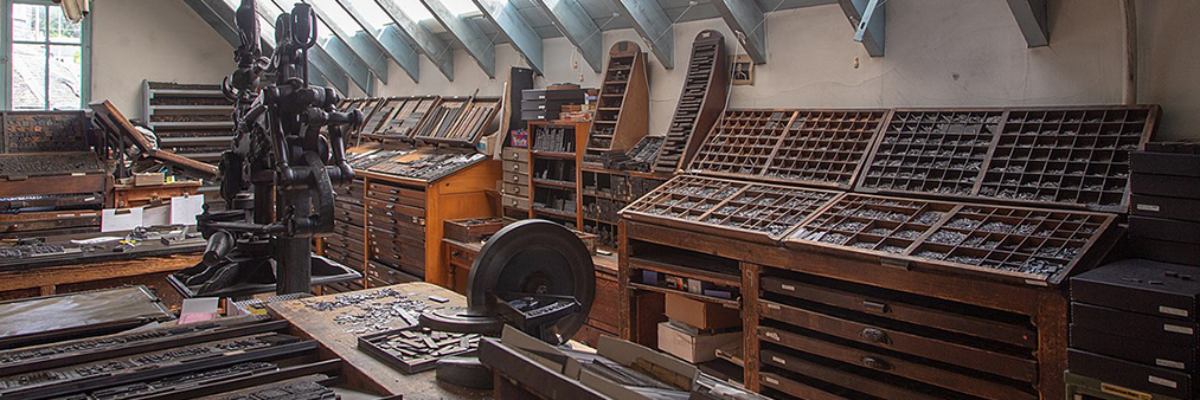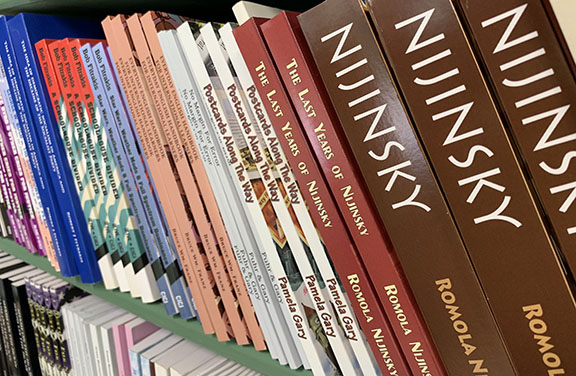Zip Print offers a variety of book binding options including Perfect Bound(paperback), Saddle stitch, Coil bound, and comb bound. We do not offer hard cover binding. Here is a discussion of the various types of book binding.
There are number of ways to bind a book. They offer a variety of costs, purposes, durability and aesthetics. The most common binding type is perfect bound (paperback) The majority of books published in print use this method of binding. Hardcover books are a fair bit more expensive than perfect bound books but serve a similar purpose. In fact, many published books are available in both paperback and hardcover versions. Saddle stitch books follow a close second as they are used for many special purpose items such as magazines, portfolios, programs, and manuals. Coil binding tends to be used for books where the need is to use the book extensively for particular purposes. Such purposes include work manuals, cookbooks, and course materials where the user needs to constantly refer to the book during a process. Finally, comb binding serves a similar purpose to coil binding, but the binding tends to be less durable and harder to use than cold binding.
Here is a discussion of the various bookbinding options, their uses, costs, pros and cons.
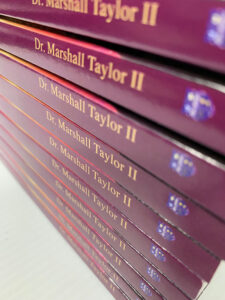 Perfect binding, also known as paperback binding, is the most common form of bookbinding. It is durable inexpensive and offer a clean, professional look to any book. This style uses adhesives to glue the book cover to the book block (text). There are two adhesives that can be used to create a perfect bound book. The traditional choice is EVA (Ethylene Vinyl Acetate). It offers a strong bond that cures quickly and is inexpensive. Its downside is its venerability to heat and cold, which can compromise the bond between the cover and book block. PUR (Polyurethane Reactive) is a newer type of adhesive. It is far stronger than EVA, and not susceptible to extreme temperatures. Once a book has been perfect bound, the glue is given time to cure (from several hours to 24/48 hours depending on the glue) and the book is then trimmed on three sides to offer clean, smooth edges.
Perfect binding, also known as paperback binding, is the most common form of bookbinding. It is durable inexpensive and offer a clean, professional look to any book. This style uses adhesives to glue the book cover to the book block (text). There are two adhesives that can be used to create a perfect bound book. The traditional choice is EVA (Ethylene Vinyl Acetate). It offers a strong bond that cures quickly and is inexpensive. Its downside is its venerability to heat and cold, which can compromise the bond between the cover and book block. PUR (Polyurethane Reactive) is a newer type of adhesive. It is far stronger than EVA, and not susceptible to extreme temperatures. Once a book has been perfect bound, the glue is given time to cure (from several hours to 24/48 hours depending on the glue) and the book is then trimmed on three sides to offer clean, smooth edges.
Hardcover binding caters to high-end books, books that need to be very durable under heavy use, or those that are meant to last for a ling time. Hardcover books are fairly expensive when compared to alternate bindings and use a more complicated process. The binding process itself can use glues or sewing techniques to fasten the book block to the cover.
Saddle Stitch binding uses a process that folds large sheets in half and the fastens them using 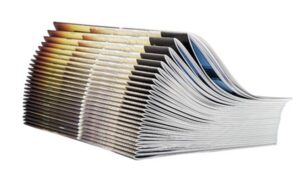 staples or sewing techniques. Many modern digital printers offer folding, stapling and trimming in a single pass, allowing for fast, simple and inexpensive creation of books/booklets. This type of booklet printing and binding lends itself well to magazines, manuals, portfolios and marketing materials.
staples or sewing techniques. Many modern digital printers offer folding, stapling and trimming in a single pass, allowing for fast, simple and inexpensive creation of books/booklets. This type of booklet printing and binding lends itself well to magazines, manuals, portfolios and marketing materials.
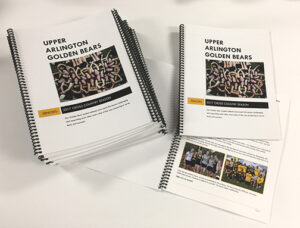 Coil and comb binding are very similar. They both involve punching holes near the edges of the book pages and then fastening them with a coil/comb. The coil is a spiral fastener that is spun through the holes, while a comb is inserted through the homes using a machine that opens and closes the combs. Both methods are similar in cost and durability and lend themselves to manuals, course materials and books that are used as reference during various physical processes.
Coil and comb binding are very similar. They both involve punching holes near the edges of the book pages and then fastening them with a coil/comb. The coil is a spiral fastener that is spun through the holes, while a comb is inserted through the homes using a machine that opens and closes the combs. Both methods are similar in cost and durability and lend themselves to manuals, course materials and books that are used as reference during various physical processes.
Bottom line, if you have a book to print and bind, you have a variety of binding options to choose from. Outside of hardcover binding, the listed techniques contribute a fairly low portion of your costs to any project. So, when considering which binding to use, you should be concerned mostly about what option offers the best usability, durability and aesthetics to your book.
